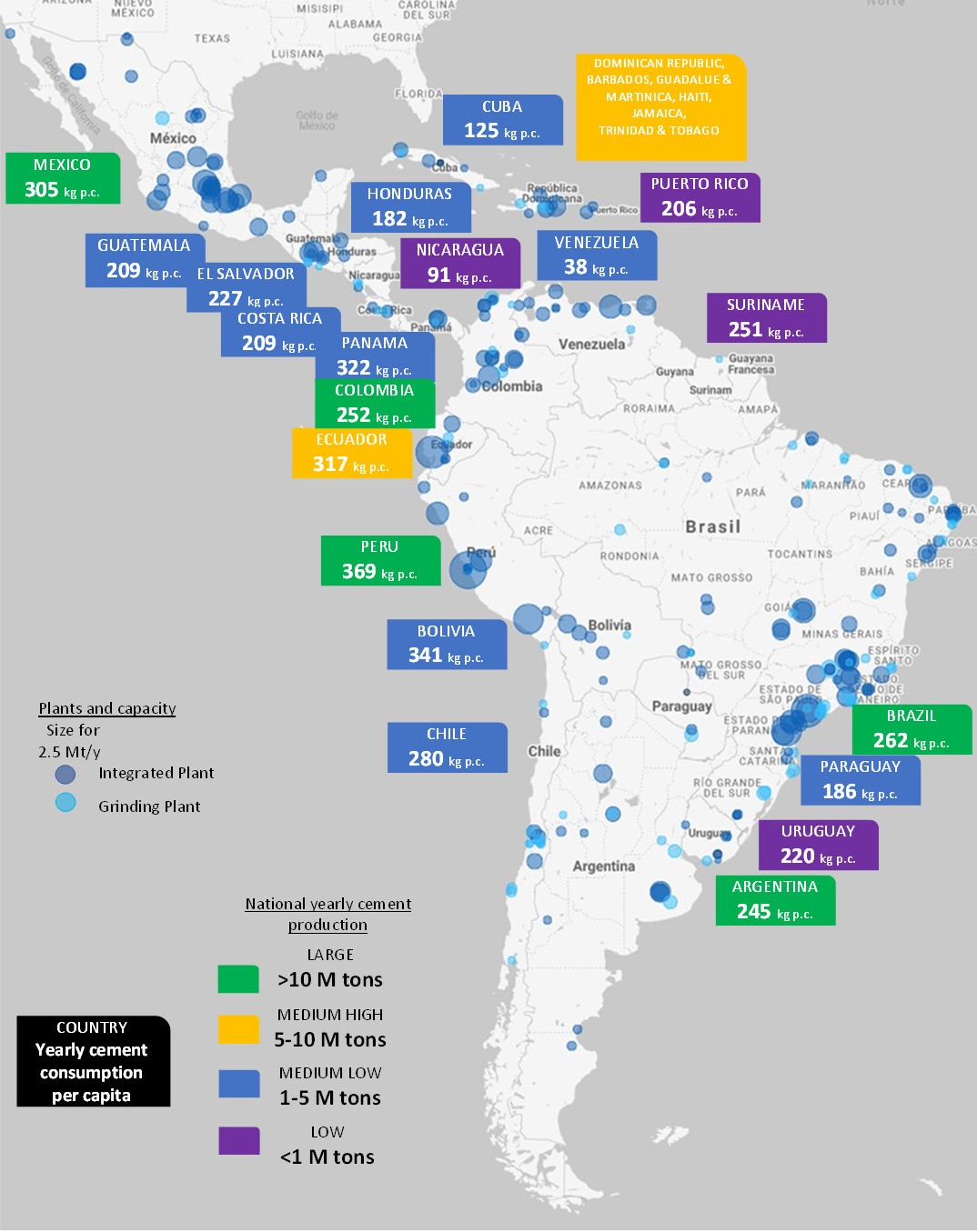Overview of cement and concrete production in Latin America and the Caribbean with a focus on the goals of reaching carbon neutrality
DOI:
https://doi.org/10.21809/rilemtechlett.2022.155Keywords:
low carbon cement; supplementary cementitious materials; cement production; global warming potentialAbstract
Carbon neutrality to limit global warming is an increasing challenge for all industries, particularly for the cement industry, due to the chemical emission of the process. For decades, reducing the clinker factor has been one of the main strategies to reduce the carbon footprint. Additional cuttings in the clinker content of cements seem possible with the upsurge of novel supplementary cementitious materials. This potential contribution represents only a fraction of the required carbon reductions for achieving the goal of carbon neutrality in the coming decades. This paper describes the current situation of the cement industry in Latin America and the Caribbean and the global opportunities and strategies to reduce the carbon footprint of cement and concrete and their adaptation to the regional conditions. Besides describing emerging supplementary cementitious materials, the potential contributions of industrialization and quality control are discussed. Moreover, limitations related to geography and standardization are analyzed. Regional considerations are made given the specific prospects of human development.

Downloads
Published
How to Cite
Issue
Section
License
Copyright (c) 2022 Yury Villagrán-Zaccardi, Ricardo Pareja, Lina Rojas, Edgardo Fabián Irassar, Andrés Torres-Acosta, Jorge Tobón, Vanderley M. John

This work is licensed under a Creative Commons Attribution 4.0 International License.
Authors retain copyright of the articles published in RILEM Technical Letters and grant the journal the right of first publication with open access. The work is simultaneously licensed under Creative Commons Attribution 4.0 International License (CC BY 4.0) that allows others to share and adapt the work under the following terms: 1) a proper attribution is given in a form of bibliographic record with the DOI link directing to RILEM Technical Letters; 2) a link to the license is provided; 3) the changes (if any) are indicated.









